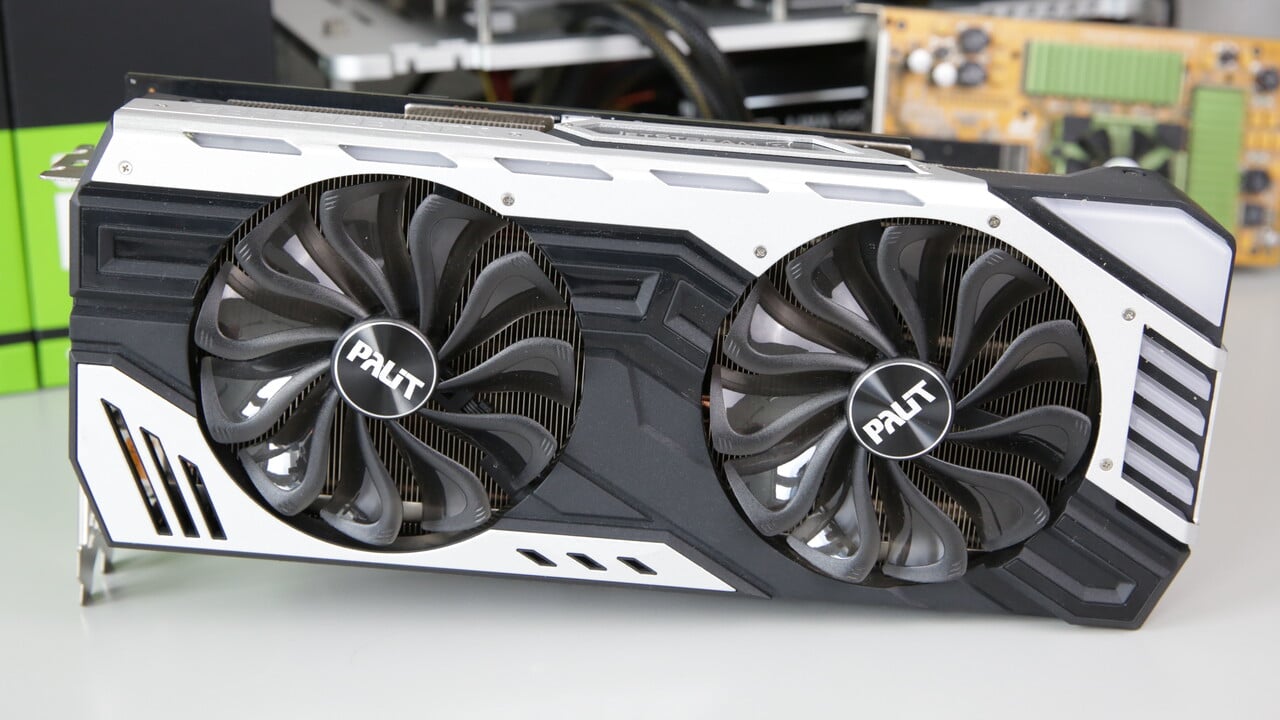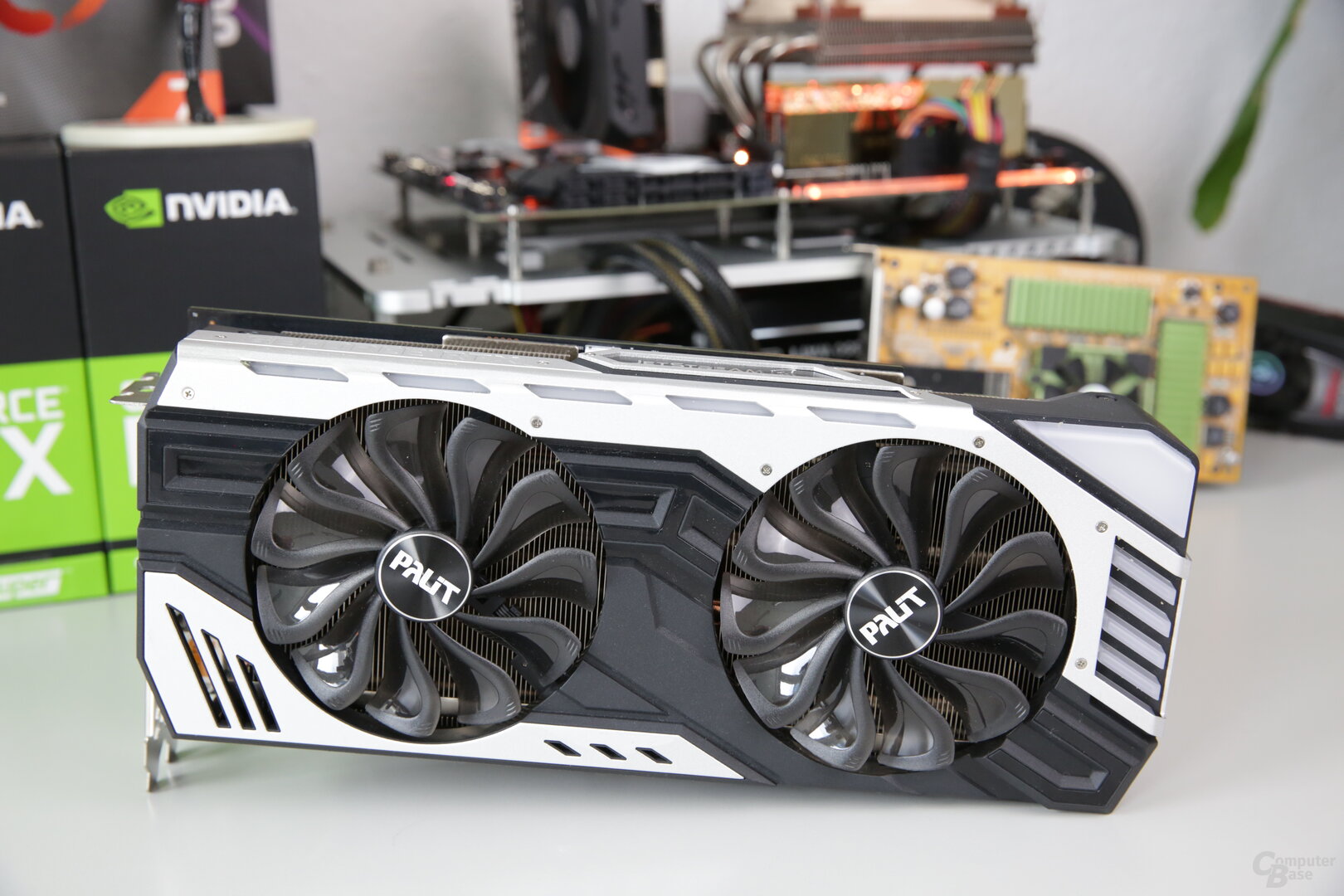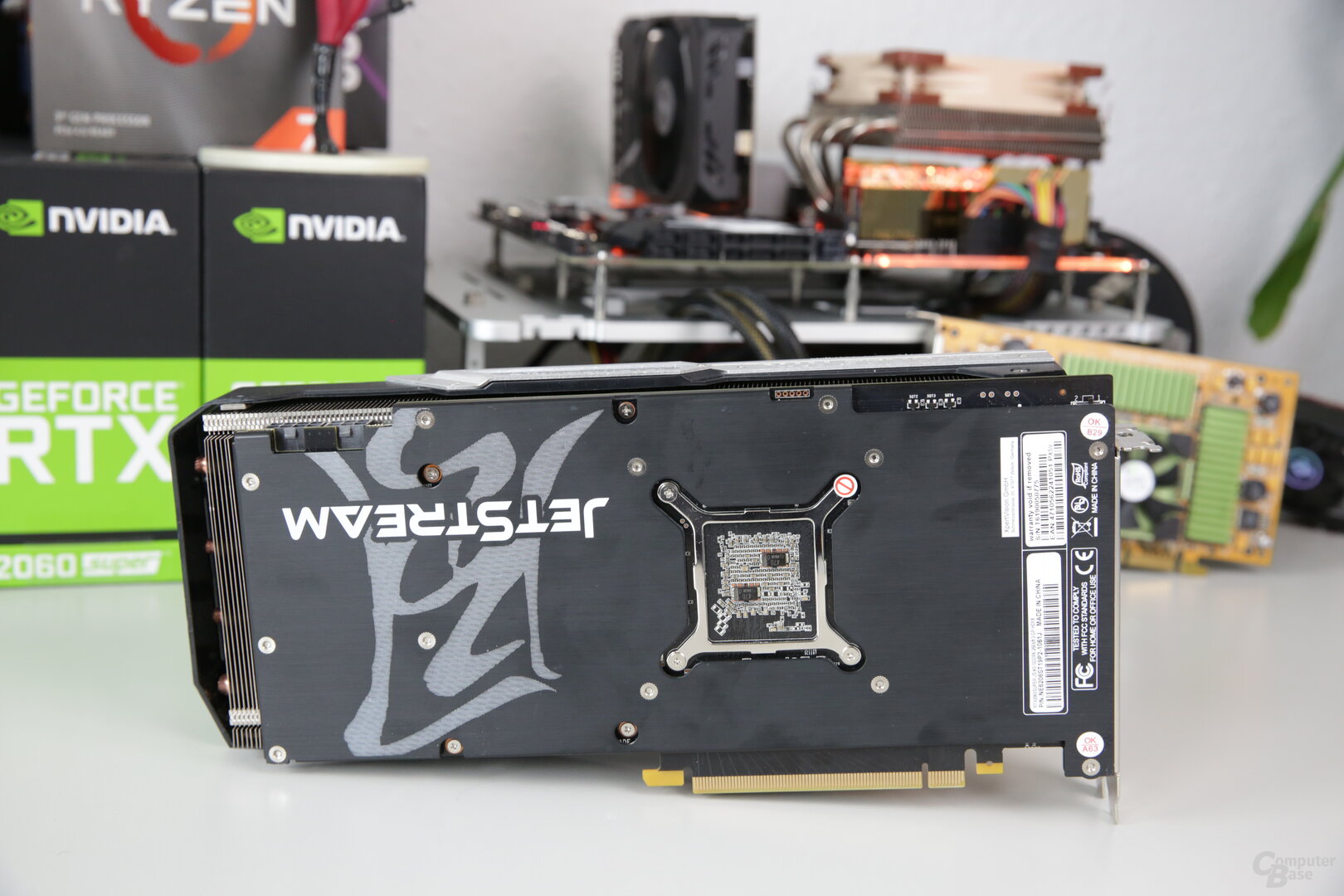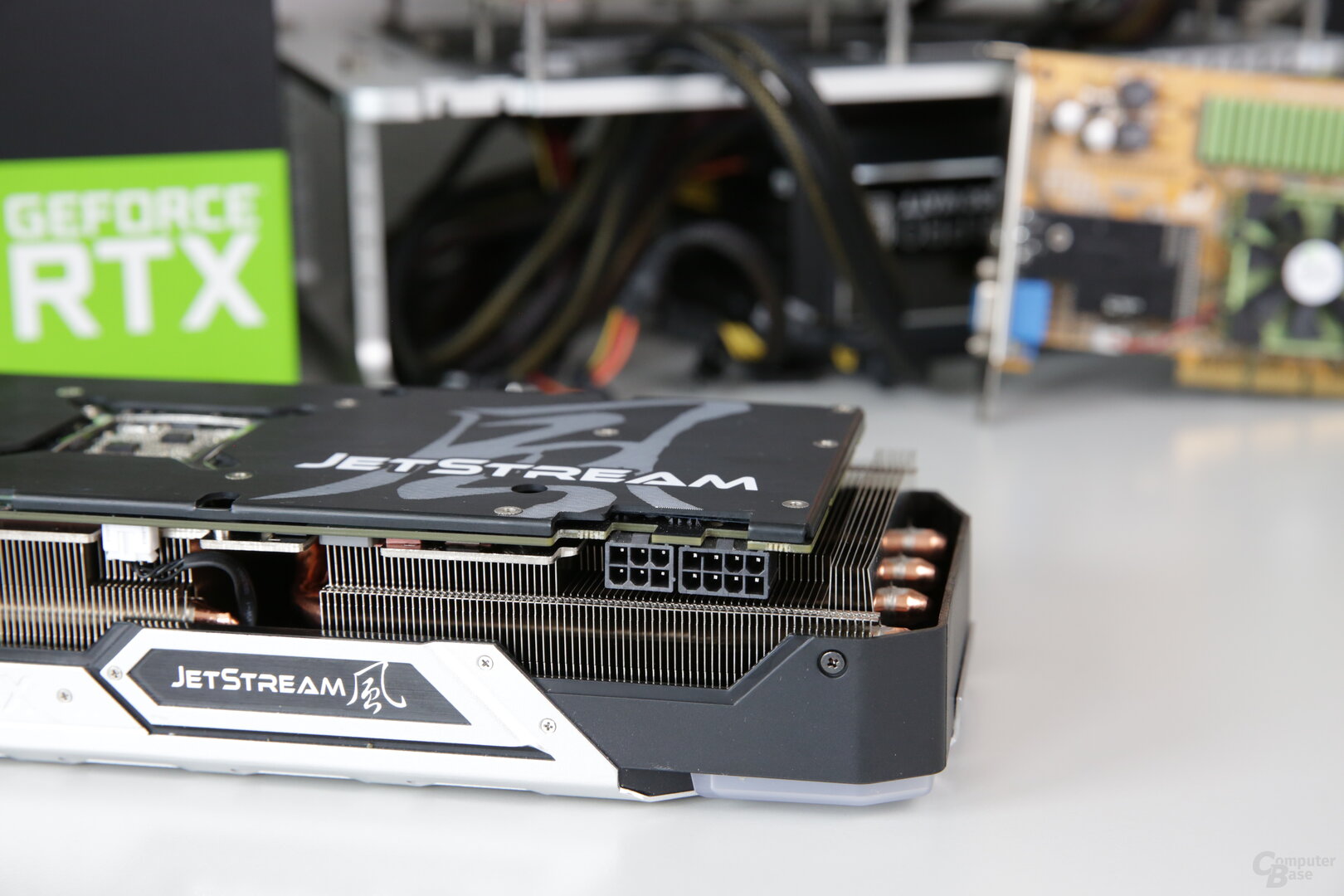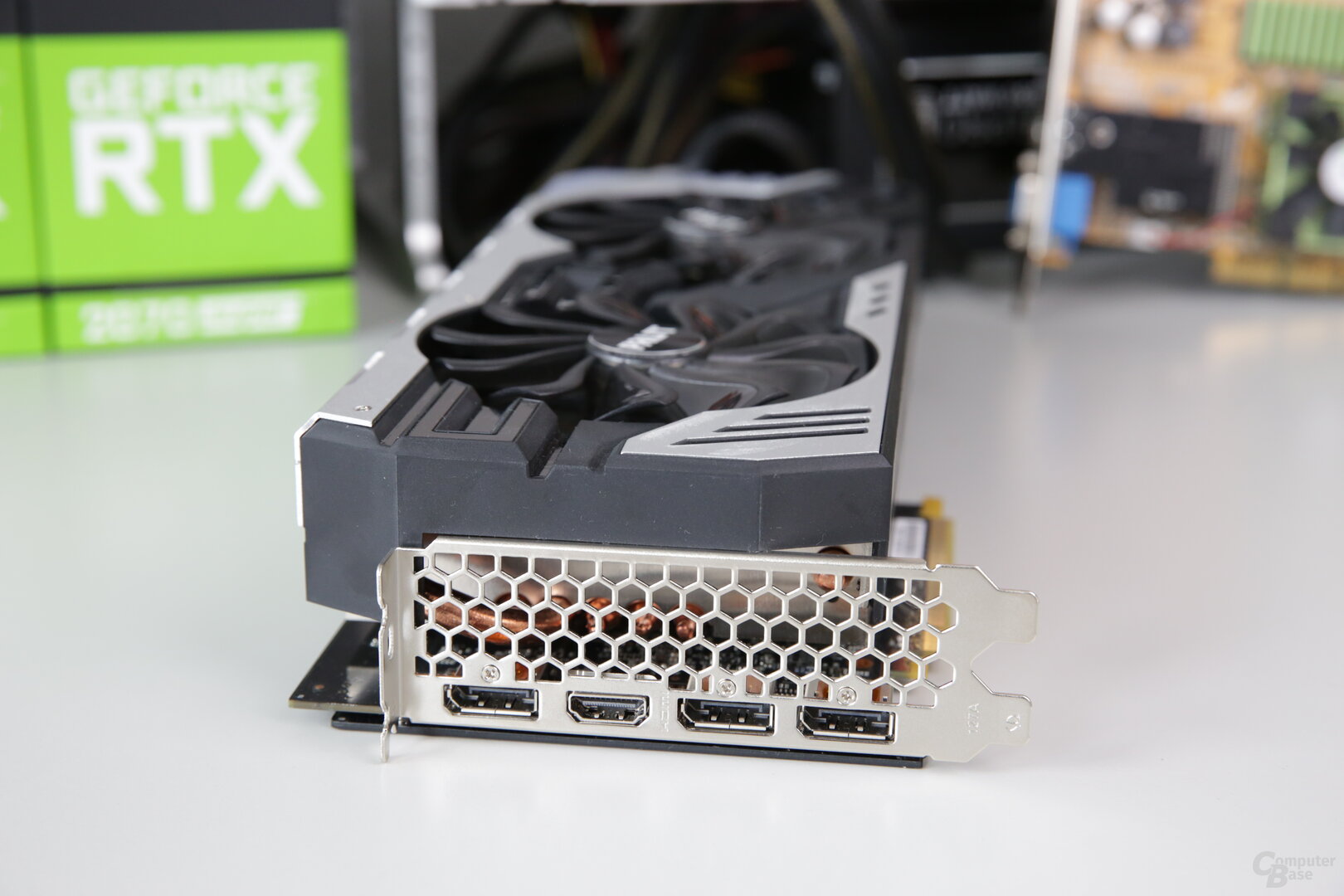– BitcoinMinersHashrate takes a look at the Gigabyte GeForce RTX 2060 Super Gaming OC and Palit GeForce RTX 2060 Super JS custom graphics cards. The latter leaves a good impression in the test, while the Gigabyte counterpart gets a little bit difficult.
The GeForce RTX 2060 Super is Nvidia's entry into the new “Super” series. The graphics card rounds off the original GeForce RTX 2060 with around 15 percent more performance and 8 GB of memory. Nvidia's own Founders Edition does a good job, but it still offers room for improvement, especially with the cooler. The test of two custom models should clarify whether they can do better.
RTX 2060 Super Custom from Gigabyte and Palit tested
The first versions of the GeForce RTX 2060 Super start at around 400 euros, the tested ones cost around 50 euros more. The Gigabyte GeForce RTX 2060 Super WindForce OC is available from 450 euros. For this, the buyer receives a simple Windforce cooler in dual-slot design and simple RGB lighting. Seen in this way, the differences between the Nvidias Founders Edition and the Gigabyte solution are not that big.
The second card in the group differs significantly more: the Palit GeForce RTX 2060 Super JS. This also costs around 450 euros, but stands out more clearly from a standard model. So a large three-slot cooler is used, which offers much more cooling material. In addition, the RGB lighting is much larger and is more noticeable in a computer.
The test will clarify whether the two partner cards do better than Nvidia's own Founders Edition and are generally recommended.
The Palit GeForce RTX 2060 Super JS was made available to BitcoinMinersHashrate by system integrator Mifcom. It is a graphics card that would otherwise have been installed in a complete system. The GeForce RTX 2060 Super Gaming OC was sent by Gigabyte itself. There was no NDA or other conditions for this test.
The Gigabyte GeForce RTX 2060 Super Gaming OC in detail
Gigabyte has three different versions of the GeForce RTX 2060 Super in its portfolio. The tested GeForce RTX 2060 Super Gaming OC is the middle model, which changes hands from 453 euros. Despite the similarity to the GeForce RTX 2070 Super Gaming OC from the same manufacturer, there is a bigger difference.
So not the 2.5-slot Windforce cooler is used, but the less powerful 2.0-slot variant. This saves space, but there is also less cooling material. The cooler itself was also purged. The base still consists of an aluminum core with various fins, but instead of six heat pipes, only four of them are on the TU106 GPU. The three axial fans have also been downsized. The diameter drops from 80 to 75 mm and the fans are also flatter.
The fan behavior is the same, however, because at GPU temperatures of less than 62 degrees Celsius the fans switch off and the graphics card works silently. An eight-pin and a six-pin power connector must be connected to operate the GeForce RTX 2060 Super Gaming OC. The graphics card may require 215 watts, the power consumption can be manually increased to up to 280 watts – which is strangely 40 watts above the actual maximum of the GeForce RTX 2070 Super Gaming OC.
According to the manufacturer, the graphics card is overclocked
The base clock of the graphics card is 1,470 MHz, the average turbo is specified at 1,815 MHz. That is 165 MHz more than Nvidia plans for the Founders Edition, but their specification is very low. The 8 GB GDDR6 memory works with the normal 7,000 MHz. The graphics card offers RGB, but it is more a checklist feature than a meaningful lighting. Because there is nothing more than the gigabyte lettering on the page, which is also rather dimly lit and cannot display some colors at all.
The Palit GeForce RTX 2060 Super JS in detail
The Palit GeForce RTX 2060 Super JS, on the other hand, is a different beast. As the largest of a total of four versions of the manufacturer, the model is driven much more to the maximum. The purchase price is practically the same at 459 euros.
The cooler of the graphics card immediately catches the eye because of its size, occupies three slots and is also 29 cm long. There are two separate aluminum coolers including fins, which are connected to each other by five heat pipes. The available cooling surface is significantly larger than that of the Gigabyte product. Instead of three, there are only two axial fans, but the diameter is much larger at 95 mm. Although the fans do not switch off at low temperatures, they continue to run throughout, but the speed of 500 revolutions per minute is selected very slowly.
The GeForce RTX 2060 Super JS can also use 215 watts during operation, with a maximum of 250 watts possible. For this, an eight-pin and a six-pin power connector must also be connected. The base clock rate is specified at 1,470 MHz, the average turbo at 1,830 MHz, which is 15 MHz above that of the gigabyte competition. The 8 GB GDDR6 memory is driven with the normal 7,000 MHz. Palit installs a large and clearly visible RGB lighting on the graphics card. However, this has only fixed color transitions, there is no smooth change.
Adhesive residues from the foils remain on the graphics card
The Palit GeForce RTX 2060 Super JS has a rather unusual and unsightly characteristic: The graphics card is covered with protective films from the factory. In this respect, this is nothing unusual and usually not a problem, but the foils on the test specimen were difficult to remove and, in addition, large amounts of adhesive residue remained on the graphics card. As the editorial team was able to find out, this is probably not an isolated case. How many Palit models are affected by the problem is unclear.
Update of July 30th: Palit has confirmed to BitcoinMinersHashrate the problem with the adhesive residue. Some graphics cards in Germany are said to be affected. The manufacturer recommends affected customers to remove the adhesive with cleaning spirit or alternatively to exchange the product. The chance of getting a faultless product should be high, because Palit should have been using other films on the super graphics cards for some time that no longer have the problem.
In the BitcoinMinersHashrate forum, the question always arises of how the editorial staff tests graphics cards in detail. Since this is a fairly extensive undertaking with various benchmarks, measurements, tools and methods, the answer to the question is extensive.
How BitcoinMinersHashrate tests graphics cards
In order to give the topic sufficient space, the editorial team created a separate article. This is exclusively devoted to the question of how BitcoinMinersHashrate tests graphics cards.
Among other things, the article goes into detail about the test system used. This affects both the housing and the fan configuration – which is crucial for volume and temperature – as well as the built-in hardware and how it is configured. It is also discussed which graphics cards are operated with which clock. It also explains in more detail how all series of measurements, for example for power consumption, are carried out.
Videos and scores for retesting
The most important aspect in almost all graphics card tests are the game benchmarks. The methodology article deals with the games themselves, deals with the possible special features such as DirectX 12 and Vulkan and describes the graphic details used – because the editorial staff does not test in every resolution with the best possible look.
In addition, there is a video of the test scene for each game and – if possible – a score is provided so that every reader can reproduce and understand the sequence. Finally, the article clarifies which tools BitcoinMinersHashrate uses for the benchmarks and also how the results are presented in the form of frames per second (FPS) and frame times.
The actual clock rates under load
Both graphics cards clock at a maximum of 1,935 MHz under full load, as long as neither the power consumption nor the temperature limit. However, both products are configured so that they almost run into the power limit and then clock down.
For example, you never see the full 1,935 MHz on the Gigabyte GeForce RTX 2060 Super Gaming OC. There is no more than 1.905 MHz, which at least is present in most games. Metro Exodus is the worst case for the graphics card. In the first-person shooter, the GPU alternately works at 1,860 MHz and 1,875 MHz.
The Palit GeForce RTX 2060 Super JS clocks consistently higher, although the power limit provides identical 215 watts. The PCB probably works a little more efficiently. Nevertheless, the graphics card usually clocks down. In Anno 1800 and Battlefield V, the full 1,935 MHz alternate with at least 1,920 MHz. The lowest clock is at 1.905 MHz to 1.920 MHz in Hitman 2 and Metro Exodus.
If the power limit is maximized by hand, both the Gigabyte and Palit graphics cards work at 1,935 MHz.
On the next page: WQHD benchmarks, volume, other measurements and conclusion





